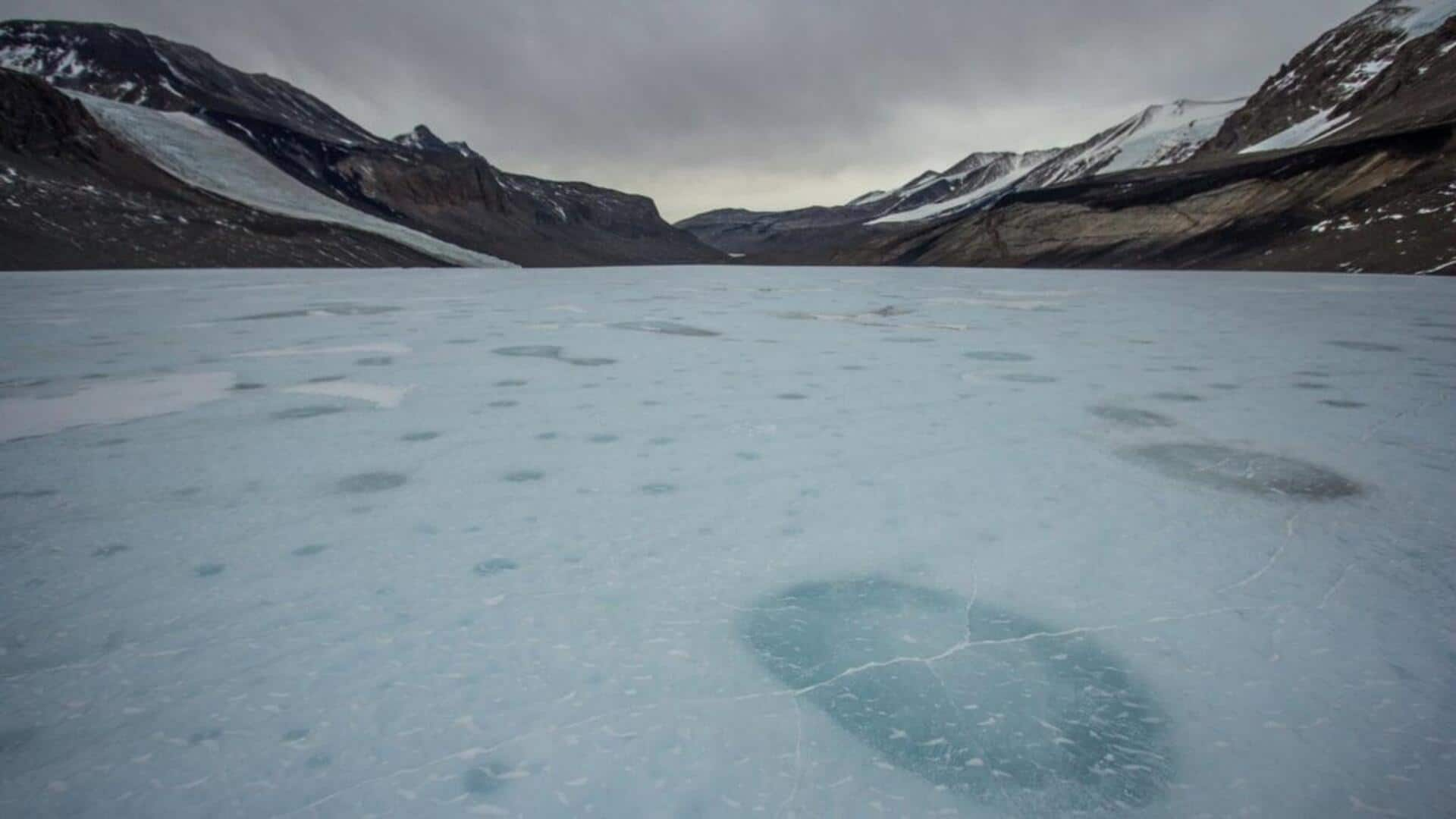
NASA discovers potential habitats for microbial life on Mars
What's the story
A recent study by NASA has found small patches on Mars that could harbor life.
These areas are thought to be capable of converting sunlight, water, and carbon dioxide into oxygen through photosynthesis.
The same process is employed by plants, algae, and cyanobacteria on Earth to produce chemical energy.
While the study doesn't confirm photosynthetic aliens in these environments now or in the past, it does offer promising targets for future exploration missions.
Orbital observations
Mars Reconnaissance Orbiter detects white material
NASA's Mars Reconnaissance Orbiter, a spacecraft orbiting the Red Planet, has detected white material lining dry gullies. These are believed to be dusty water ice.
The Martian tropics where this environment is located could contain small pockets of meltwater, similar to features found within glaciers on Earth.
A team of scientists has suggested that simple lifeforms like microbes could potentially find refuge up to 10 feet below the Martian surface, in these ice deposits found near the equator.
Expert insight
Martian ice exposures: A promising location for extraterrestrial life
Lead author of the study Aditya Khuller said, "If we're trying to find life anywhere in the universe today, Martian ice exposures are probably one of the most accessible places we should be looking."
Over several ice ages over eons, snow mixed with dust fell on Mars's surface. That ancient snow - now ice - still contains flecks of dust.
Through computer simulations, the team showed a habitable zone could exist on Mars in ice with such dust.
Simulation findings
Sunlight penetration and photosynthesis on Mars
The study, suggests that just the right amount of sunlight could penetrate the ice to allow photosynthesis to occur in pockets of meltwater below an icy layer.
On Earth, dust within ice can form cryoconite holes — small areas where dust carried by wind lands on the ground, absorbs sunlight, warms up, and then melts deeper into ice each summer.
These particles continue to create enough heat to melt small pools of water around them.
Earthly phenomenon
Cryoconite holes and life on Earth
Phil Christensen of Arizona State University, a co-author of the study, explained, "This is a common phenomenon on Earth."
He added, "Dense snow and ice can melt from the inside out, letting in sunlight that warms it like a greenhouse."
On Mars, where there's no protective magnetic field enveloping the planet, toxic radiation from the Sun could be absorbed by a thick slab of ice. This could protect biology below while allowing enough light to pass through for photosynthesis.
Martian tropics
Mars' tropics may provide right conditions for life
The study found that the environment at Mars' poles would likely be too cold for cryoconite holes to form beneath ice, but the planet's tropics may present the right conditions.
During the NASA study, scientists learned that too much dirt in the ice would make for a very small habitable zone, of perhaps just 2-15-inch below ground.
In clearer ice, that zone could potentially extend to 10 feet deep.